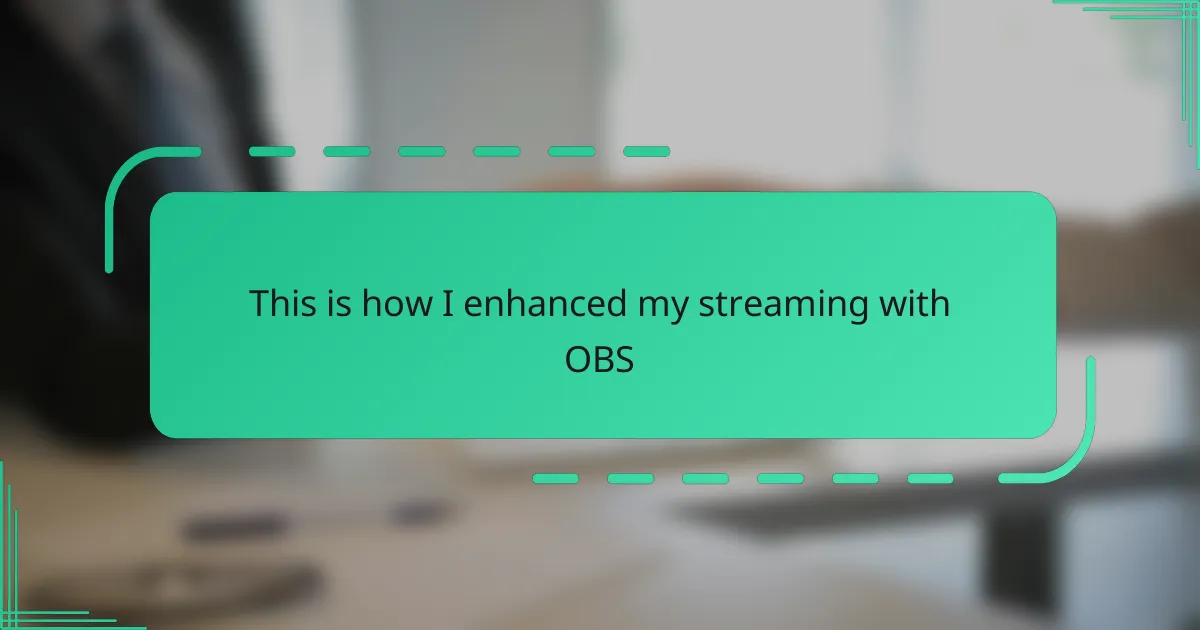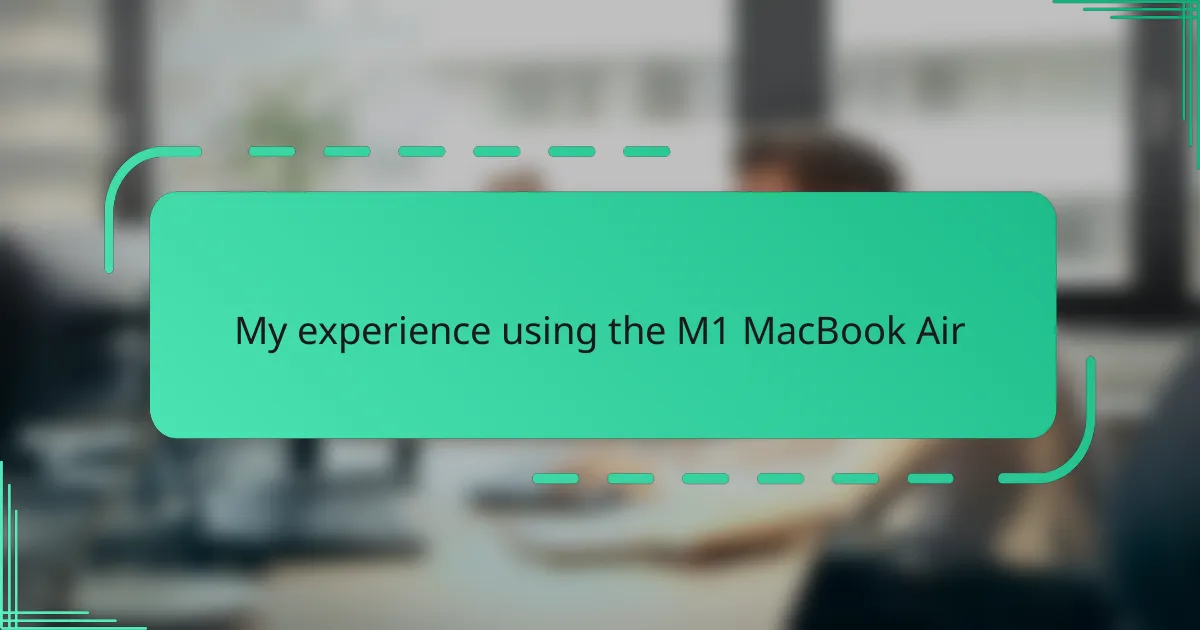Key takeaways
- Investing in quality technology, like Sennheiser headphones, significantly enhances audio clarity and comfort, improving focus and productivity during long work sessions.
- Planning the upgrade process by identifying pain points, setting a budget, and considering workflow integration helps streamline transitions and reduce frustrations.
- Optimizing audio quality in virtual meetings fosters better communication, reduces mental fatigue, and enhances the overall connection among remote colleagues.
- Upgraded equipment leads to increased engagement and confidence in meetings, making virtual interactions more productive and enjoyable.
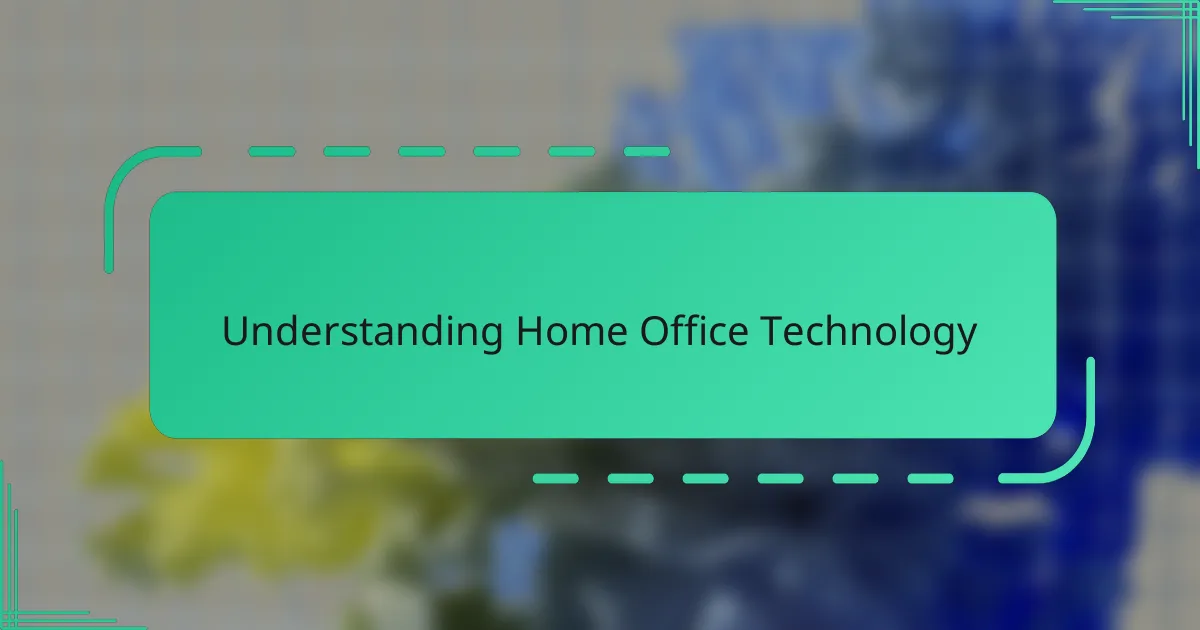
Understanding Home Office Technology
When I first looked at my home office setup, I realized technology isn’t just about having gadgets; it’s about creating an environment that helps me focus and communicate clearly. Have you ever noticed how a simple change in your tech can totally shift your productivity? For me, understanding what each piece of equipment does was the key to upgrading effectively.
It’s easy to think a laptop alone is enough, but that’s just the start. From audio quality in calls to ergonomic devices, every detail counts when you want to feel comfortable and professional all day long. I found that investing time in learning how these tools interact really made a difference in my daily workflow.
Technology also shapes how we connect with others remotely. I often ask myself, how can my tools help me feel closer to my colleagues despite the distance? Realizing this changed my approach to selecting devices that not only serve a purpose but also enhance human connection in a virtual workspace.
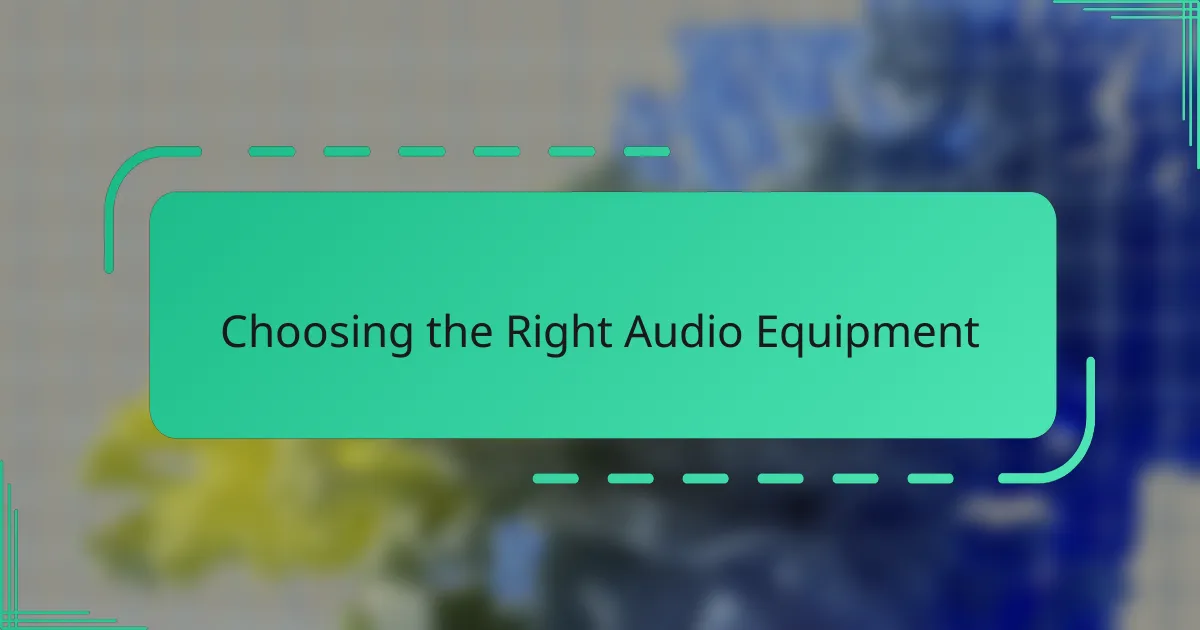
Choosing the Right Audio Equipment
Choosing the right audio equipment felt overwhelming at first—there are so many options out there. I asked myself, do I need something that captures every word crisply during calls, or something that also delivers rich sound for background music? Narrowing down my priorities helped me focus on what truly mattered.
I quickly realized that audio clarity isn’t just about sounding good but about being understood effortlessly. Investing in Sennheiser headphones made me appreciate how much better conversations flow when the sound is clear and natural, reducing the strain of repeating myself or asking others to clarify. Have you ever experienced a call where poor audio made you want to hang up? That frustration was a big motivator.
Another thing I considered was comfort during long work sessions. I didn’t want headphones that pressed hard or distracted me—Sennheiser’s design struck the right balance between solid build and softness, making hours of use surprisingly pleasant. For me, choosing the right gear became a game-changer not just in productivity, but in overall well-being.

Why Sennheiser Stands Out
What makes Sennheiser stand out to me is their unwavering commitment to audio precision. I remember the first time I tried their headphones—I was struck by how every word came through so clearly, it felt like my colleagues were right there in the room. Have you ever noticed how crystal-clear sound can instantly make conversations easier and less tiring? That level of clarity is something I hadn’t experienced before.
Another thing I appreciate is the thoughtful design behind each product. Sennheiser doesn’t just create headphones; they craft comfort that lasts through long workdays. I often joked that my old headphones felt like a vice on my head, but with Sennheiser, I forget I’m even wearing them. Isn’t it amazing how comfort can change how you feel during a call, making you more focused and relaxed?
Lastly, I think Sennheiser’s reputation for durability truly matters. Investing in tech feels personal when you know it will stand up to daily use without losing quality. For me, this reliability gave peace of mind—no more worrying about gear failing right before an important meeting. Doesn’t that kind of assurance let you concentrate on what really matters?

Planning the Upgrade Process
Planning the upgrade process started with me taking a hard look at what wasn’t working in my current setup. I asked myself, “Which frustrations do I want to eliminate first?” Pinpointing those pain points made the whole project feel less overwhelming and more purposeful.
Next, I mapped out a budget and timeline, but more importantly, I gave myself permission to prioritize quality over quantity. I remember hesitating, wondering if spending more on Sennheiser gear was worth it. Now, I can say that investing thoughtfully paid off far beyond the price tag.
I also thought about how the upgrade would fit into my daily routine. Could I install new equipment without disrupting my workflow? Planning those small details beforehand saved me from unnecessary headaches, and it made the transition smoother than I expected. Have you tried upgrading tech only to get stuck in setup chaos? I learned that a little prep goes a long way.

Setting Up Sennheiser Gear
Setting up my Sennheiser gear was surprisingly straightforward, which made the whole upgrade feel less intimidating. I remember unboxing the headphones and being impressed by how intuitive the connections were—no complicated manuals or endless troubleshooting. Have you ever struggled with tech that takes ages just to get started? This wasn’t one of those times.
Connecting the headset to my computer was as simple as plugging in the USB cable and selecting the device in my audio settings. I appreciated how the software intuitively recognized the Sennheiser gear, making the initial test call feel seamless and professional. It’s small things like this that make a real difference when you’re eager to get back to work without delays.
Adjusting the fit was another quick step that mattered a lot to me. I found that the adjustable headband and cushioned ear pads gave me the comfort I needed for long hours without pressure points. Don’t you find that when gear fits well, it almost becomes invisible during your busiest days? That’s exactly what happened here—I barely noticed the headphones after a few minutes.
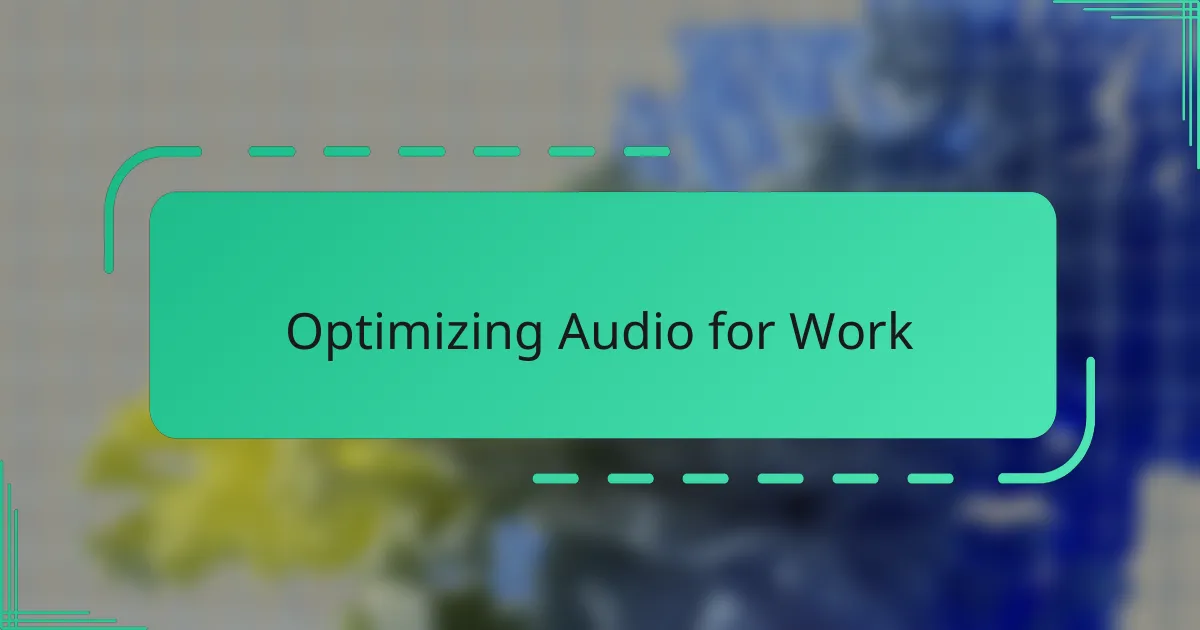
Optimizing Audio for Work
Optimizing audio for work became a real eye-opener for me once I understood how much bad sound quality saps my focus. Have you ever tried concentrating on a meeting when voices crackle or background noise creeps in? It’s exhausting, and that’s when I knew I had to upgrade.
I found that clear, crisp audio does more than just make conversations easier—it actually reduces mental fatigue. When every word comes through effortlessly, I spend less time asking for repeats and more time contributing ideas. It’s a subtle difference, but over a whole workday, it adds up dramatically.
Another surprising benefit was how better audio helped me feel more connected, even when working remotely. Those moments when the sound feels natural make virtual meetings more engaging and less like a chore. Don’t you think that kind of connection is exactly what our home offices need? For me, optimizing audio turned out to be one of the smartest productivity moves I’ve made.
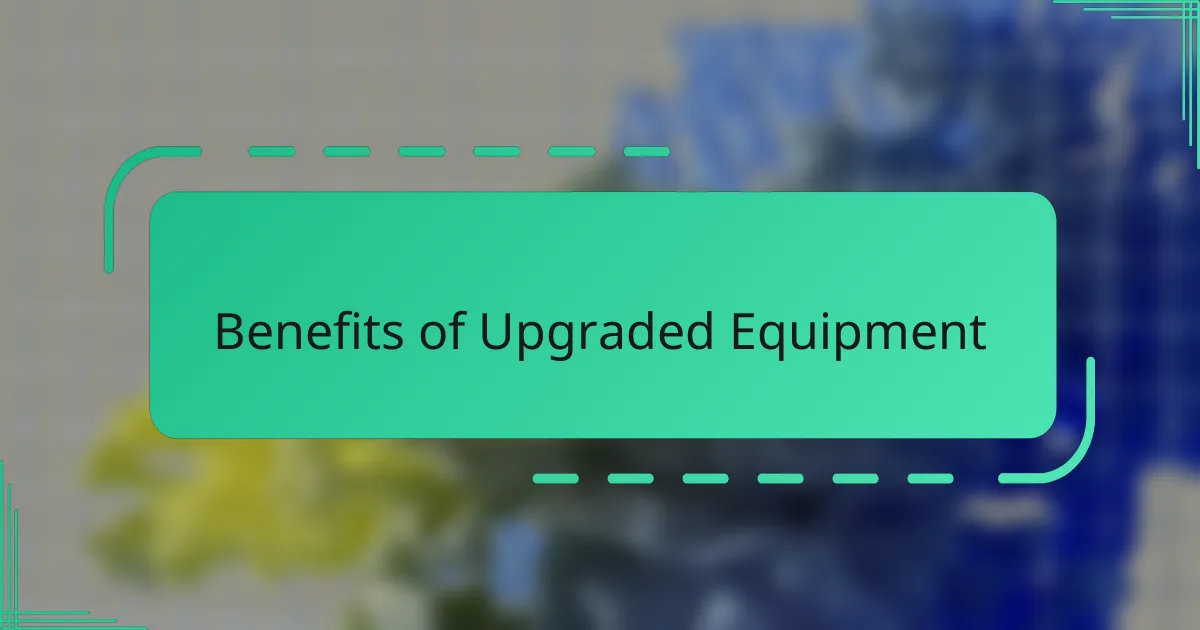
Benefits of Upgraded Equipment
Upgrading my home office equipment brought immediate benefits that went beyond just better sound. Suddenly, I noticed how much sharper and more focused I felt during calls, with fewer distractions caused by unclear audio or uncomfortable gear. Have you ever been frustrated by constant background noise or muffled voices? That nagging irritation vanished once I switched to higher-quality equipment.
One of the biggest surprises was how much more comfortable I became during long work sessions. The difference wasn’t just physical; it was mental too. Knowing that my tools wouldn’t fail or wear down made me feel more confident and less stressed throughout the day. Doesn’t peace of mind like that boost your productivity?
I also realized upgraded gear helped me engage more naturally in meetings, almost like being in the same room as colleagues. Clearer audio meant fewer misunderstandings and less need to repeat myself—a win for both me and everyone else on the call. Have you experienced how better technology can transform a tedious virtual meeting into a genuinely productive conversation? For me, that change was the greatest benefit of all.

